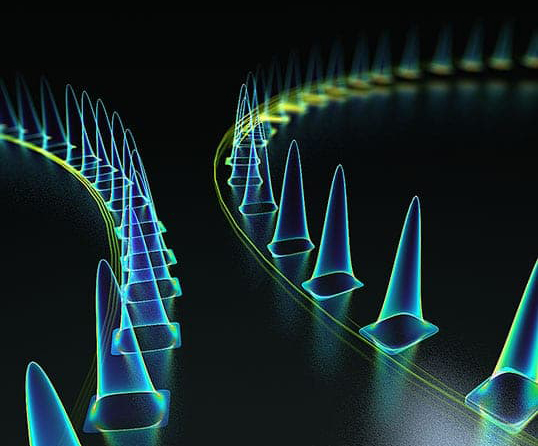
According to the Big Bang theory, before the “bang” our universe was an infinitesimally small, non-dimensional singularity, a monad of the most basic and original substance or what the spiritually inclined call The Demiurge, The One or The Divine. From that perfect symmetry of wholeness emerged the appearance of a dipolar world commonly observed as matter/antimatter, positive/negative, I/other and so on, although such dualities manifest entirely within the totality of the whole. In this way, we observe sameness and difference, but like the watery ocean and its waves, in wholeness their essence is identical.
Hwa Yen Buddhism refers to this as “the mutual identity of phenomena,” that appearances are simultaneously different and the same and that such mutual identities do not obstruct each other. Thus we are both individuals and members of humanity simultaneously, as well as multiple other unobstructed identities such as Caucasian, American, and biological host to millions of microscopic organisms.
Within the wholeness of totality, we also observe solitary phenomena that appear to develop and maintain difference within the common medium that surrounds them. Such phenomena, solitons, are observable in the natural world as solitary waves when they occur and are used in the mathematical calculations of physics. Solitons exhibit self-generating forms of propagation that are not significantly affected by interactions with other solitons; they persist unchanged over time.
In this respect, solitons exhibit a monad-like character, a break in the otherwise symmetrical universe. Analogies include monopoles (magnets of only positive or negative charge), gravity (a force of no charge), light waves moving through fiber optic cables, and some would say, the character of God. In some sense, an individual self can be characterized as a soliton.
In physics, a soliton is described as a self-reinforcing wave packet that maintains its shape while it propagates at a constant velocity. However we choose to describe one of our mutual identities of phenomena, at the quantum level one of those is as waveforms. Indeed, the phenomena of sense-of-self – “I am” – persistently propagates for seventy, eighty, or ninety years at a constant speed over time, this despite myriad interactions with other soliton waveforms, ie: other people and objects, plus the combined effects of consciousness, our profound state of ignorance, and intellectual confusion.
“Consciousness is never experienced in the plural, only in the singular,” noted physicist Erwin Schrödinger. In this way each of us feels as if we exist – godlike – at the center of our universe, although neither consciousness nor the universe has a center or an edge.
Nothing seems to last forever, except the ground of being from which we emerged and to which we’ll return. The appearance of integration and disintegration is compelling, and within the mutual identity of phenomena it’s easy for us to become emotionally attached to one or another identity and, consequently, to anticipate and fear its loss. The ground of being, however – beyond words, ineffable, mysterious – is itself a soliton, a self-reinforcing, wave-like impulse within which all and everything – totality – looking to us as parts and whole, is irrevocably propagated through time.
His realization of totality, that all things are beyond coming and going, is perhaps why, to comfort the sorrow of his caregivers and followers upon his approaching death from cancer in 1981 at the age of 57, the last words of the Sixteenth Karmapa, Rangjung Rigpe Dorje, head of the Kagyu Buddhist order of Tibet, reportedly were: “Nothing happens.”
Thank you for being here now and writing this to those of us who are experiencing being here now What a trip